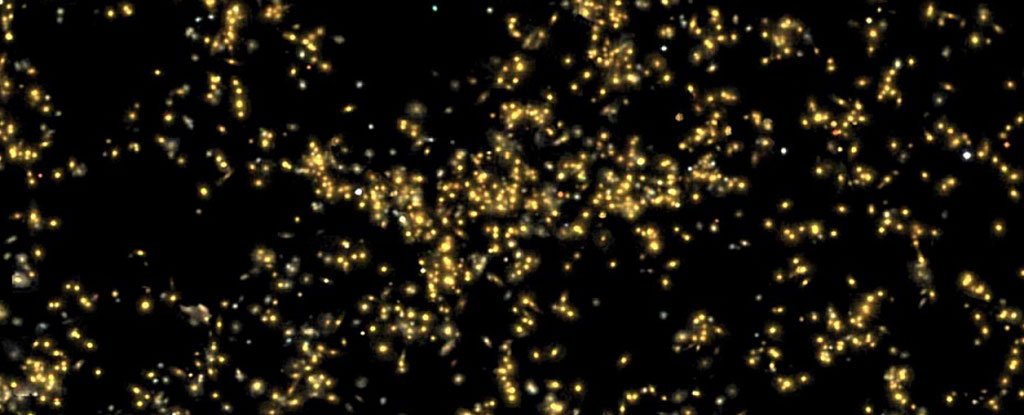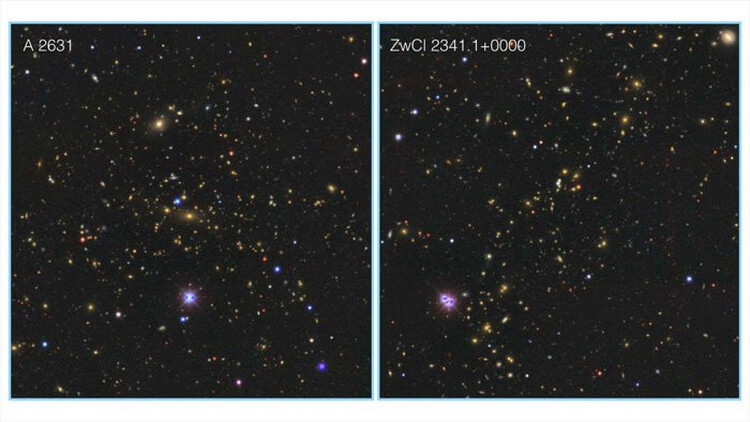
Astronomers have discovered a huge galactic supercluster, located about 4 billion light years from Earth. And this supercluster not only represents one of the largest cosmic structures among the discovered, it is also the most remote supercluster, which managed to find and explore.
In the Universe everything is relative. You may feel that the world in which we live, just incredibly huge, but it is only a small part of even larger structures – the Solar system — which, in turn, looks like only a small grain of sand in the background of our milky Way galaxy. But this is not the limit. Galaxy have the ability to be attracted to each other, forming the so-called galactic groups or clusters. And then there are superclusters, uniting under a slightly more compact galaxy clusters.
And that’s just one of those galactic superclusters found a team of astronomers from India, identifying the presence of a previously unknown very dense clusters of galaxies, which has been named after the Indian river Saraswati.
Galactic supercluster Saraswati (Saraswati supercluster), which became the finding of researchers from the inter-University centre for Astronomy and astrophysics (Inter-University Centre for Astronomy & Astrophysics, IUCAA), is truly enormous. It stretched about 600 million light years, and its weight, according to preliminary estimates, may amount to a lot more than 20 million billion Suns.
Even if we ignore the huge size and weight, interesting discovery that makes something that actually astronomers has now discovered not so many of these superclusters, which allows Sarasvati in fact engage in a sort of elite club.
“Previously superclusters, comparable in size, were discovered not so much. These include, for example, the Shapley supercluster and the Great wall Sloan,” commented astronomers Joydeep bagchi and Shishir, Sanchayan.
But allocates corsolini Saraswati from them is that unlike the latter, located in relative proximity to us, Sarasvati is located about 4 billion light years from Earth.
“This is the first time we were able to detect varshaphala located so far away from us. Even Shapley about 8-10 times closer to us,” says Somak, Raychaudhuri, one of the members of the Indian team, previously also contributed to the opening of the Shapley supercluster.

Two of the most massive galactic clusters included in the supercluster Saraswati
Astronomers have discovered a supercluster Saraswati, through analysis of the data collected in the framework of the project Kaunasskogo digital sky survey. According to scientists, this supercluster consists of a minimum of 43 galaxy groups and clusters, which in total represents about 400 different galaxies. Since the Sarasvati is so far from Earth, this means that his light before the scientists noticed him, had to overcome the enormous distance, spending a few billion years. Estimates say, the appearance of the super-cluster, which seems to us now, in fact, was exactly when the age of the Universe was 10 billion years.
Such a glimpse into the vulgar can help us understand how they formed such a massive space superstructure, and to learn more about the conditions of the early Universe, they had to do it.
“Since education is such an immense space structure is very slow, a few billion years, she carries a sort of record of the entire history of its formation,” says bagchi.
It may also be noted that the presence of superclusters of Sarasvati 4 billion light years from us was for the scientists a real surprise. When you consider our current understanding of galactic evolution, these giant space structures simply do not have enough time to form something like, when the Universe was only 10 billion years. This means that our new theoretical concepts of dark energy and dark matter, the opinion among scientists which is still not clear, in fact, could play an important role here.
“The theory always was under attack by the reality of nature. The balance of dark matter and dark energy are really able to produce giant structures, but aggregations of this size are still a mystery to us,” says Raychaudhuri.
In General, despite the discovery of such a gigantic superclusters, where there can be even more large-scale space structures awaiting discovery.
We are insignificant against the background of the Universe. And here’s a new a good example
Nikolai Khizhnyak